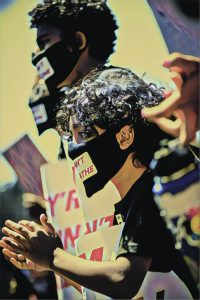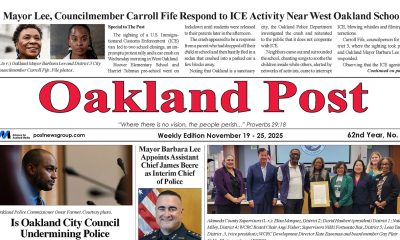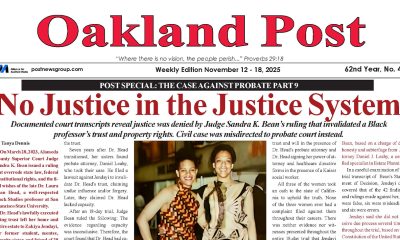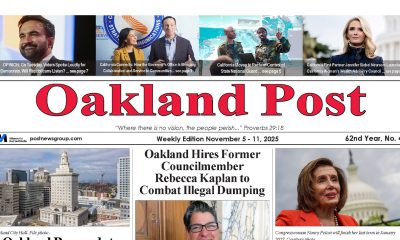Bay Area
Former Prisoners, Advocates Hold Solitary Confinement Symposium at CSU Fullerton
On July 7 and 8, the California Families Against Solitary Confinement (CFASC) held a symposium at California State University at Fullerton to celebrate the 10th anniversary of the historic agreement to end hostilities among inmates and to mark the three hunger strikes that occurred at the Pelican Bay State Prison from 2011-2012.

How the Mexican Mafia, Nuestra Familia, Black Guerrilla Family (BGF), and Aryan Brotherhood’s agreement to end hostilities against each other in prison could also be applied on the streets with gangs.
By Richard Johnson
On July 7 and 8, the California Families Against Solitary Confinement (CFASC) held a symposium at California State University at Fullerton to celebrate the 10th anniversary of the historic agreement to end hostilities among inmates and to mark the three hunger strikes that occurred at the Pelican Bay State Prison from 2011-2012.
This symposium provided the opportunity for the families, victims, supporters, and for all those who made the hunger strike and agreement to cease hostilities a success. Former inmates recounted experiences of solitary confinement. The lawyers, therapists, psychologists, and support personnel spoke about how the strike and the agreement to end hostilities helped to make a positive paradigm change for the inmates and their families.
As a panelist, I spoke of how I was victimized by being held in solitary confinement for nearly 20 years because I was labeled a “gang member,” and referred to as “the worst of the worst.”
But I emphatically pointed out that many of those who had suffered and endured, as I did, are now out in society, making a change for the betterment of society and their families. They are proving that, when given a chance, they can make positive contributions.
I was even impressed by the magnitude of success that so many of my formerly incarcerated colleagues have achieved. There are so many with advanced college degrees and PhDs while others are attending universities such as Columbia, UC Berkeley, UC Fullerton, University of Southern California, and many others. If given the chance, both women and men can ascend out of hopelessness and despair to become better versions of themselves.
Jules Lobel, a professor of law at the University of Pittsburgh, was the main speaker at the symposium. He was given the honor to give the keynote address because he was the lead attorney for the hunger strikers as well as the main litigator before the federal courts. Lobel has written several books and numerous legal articles for Harvard, Cornell, Oxford and many other institutions of higher learning. (https://ccrjustice.org/node/4464)
I am grateful to all participants and especially to Dolores Canalis who organized this event with her husband Jack Morris. I want to thank unsung heroes and sheroes that we owe a debt of gratitude for their support, volunteerism and prayers.
They include; Danny Murillo, Azadeh Zohrabi of the Berkeley underground scholars; Angelica Camacho, Ph.D.; professor at San Francisco State University and a member of the California Families Against Solitary Confinement and coordinator for the Mandela Campaign; Jamala Taylor of the Inside Garden Program; Penny Schoner of Prison Activist Resource Center; panelist Marie Levin representing her brother Ronnie Dewberry (Sitawa Nantambu Jamaa) who was one of the four main people who negotiated the hunger strike as well as the litigations; my former attorney Dan Siegel and his wife Ann Weills; Post News Group and Jonathan ‘Fitness’ Jones an ambassador from the African American Sports and Entertainment Group (AASEG).
What must be mentioned is that at the onset of the hunger strike in 2011 the various formations weren’t exactly getting along, thus the first hurdle to overcome in petitioning the court for isolation relief was to open a dialogue between the formations, such as Mexican Mafia, Nuestra Familia, Black Guerrilla Family (BGF), and Aryan Brotherhood.
This took time and energy because of all the previously held positions of discord between them. As I sat there on that stage among old rivals, it gave me great pleasure to see the fruits of our labor manifested at that symposium. Who in the past could conceive such a step forward out of the rigors of prison politics?
I must mention one guy who was my next-door neighbor and a member of the Aryan Brotherhood at one time in Pelican Bay Security Housing Unit (SHU); his name was Eddie Burnett. We sat on that stage, side-by-side, participating in panel discussions, this in itself demonstrates the beauty of respect, cooperation, remarkable reconciliation, and of course persistence and understanding. Nothing is perfect yet everything is “solutionable.” The symposium clearly highlighted that fact. Where do we go from here now that a leap forward has been taken? Life can be made simple, either you win, or you don’t lose.
This symposium opens the door for us to bring an end to hostilities on the streets. If it can work in prison, it can work on the streets too.
We as a society have an obligation to at least try to make this world a better place. I feel the responsibility rests on our shoulders to do all that is necessary to make a change for the better.
Our non-profit organization, Formerly Incarcerated Giving Back (FIGB) is currently engaged in Transitional Reentry Housing Services with the Diplomat’s Center Inc. and providing mentorship, gang intervention, community safety, trauma-informed care, voter registration, and providing housing for the unhoused in collaboration with Dr. Maritony’s Life Impact for Humanity (LIFH).
FIGB, in partnership with Partners in Careers (PIC), will be advocating for and developing living-wage jobs and recreational spaces for development and technology training.
Special thanks to POST Newsgroup Publisher Paul Cobb and owner Gay Plair Cobb for being one of the first to give a substantial donation to the Formerly Incarcerated Giving Back (FIGB). And if you have been touched and/or moved to also contribute your time, resources, and/or donations to our great community efforts feel free to contact us at 1-888-711-8351 ext.1 or email us at formerlyinc.gb@gmail.com
Alameda County
Bling It On: Holiday Lights Brighten Dark Nights All Around the Bay
On the block where I grew up in the 1960s, it was an unwritten agreement among the owners of those row homes to put up holiday lights: around the front window and door, along the porch banister, etc. Some put the Christmas tree in the window, and you could see it through the open slats of the blinds.
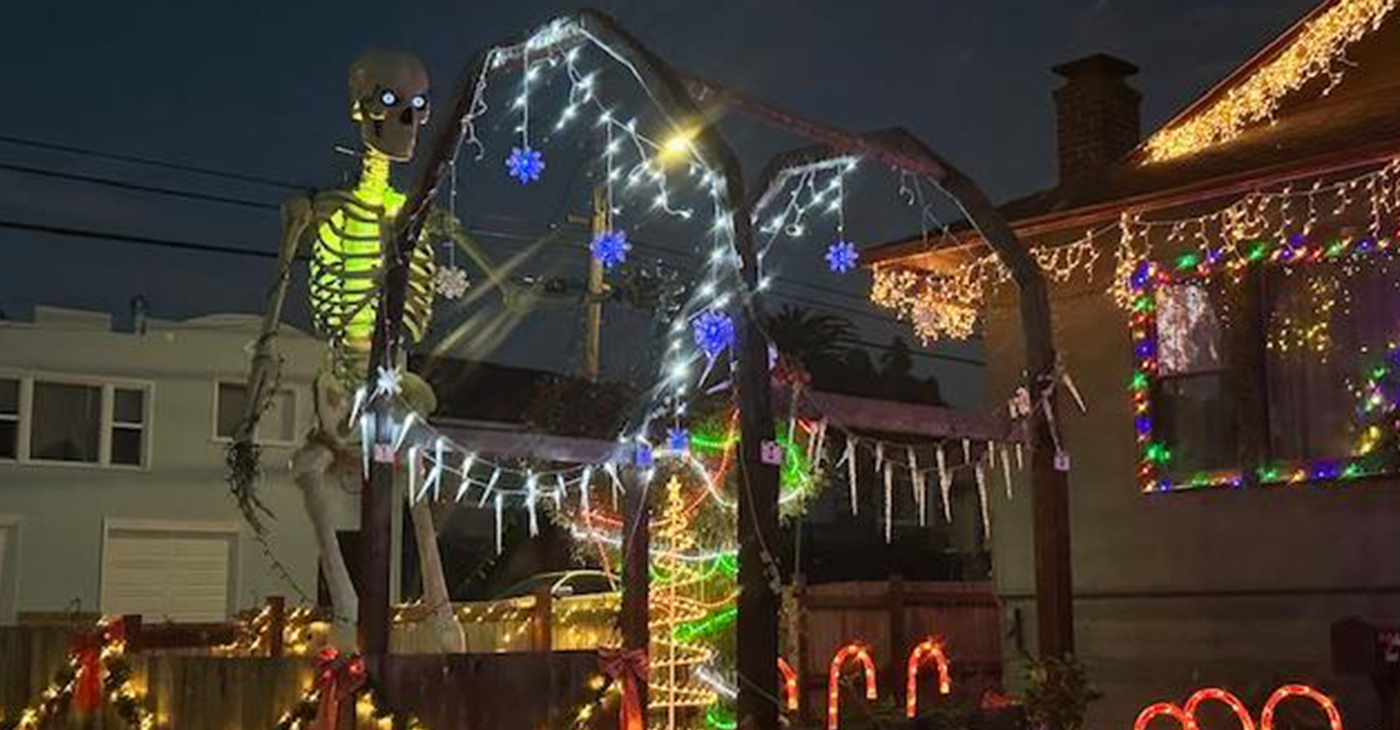
By Wanda Ravernell
I have always liked Christmas lights.
From my desk at my front window, I feel a quiet joy when the lights on the house across the street come on just as night falls.
On the block where I grew up in the 1960s, it was an unwritten agreement among the owners of those row homes to put up holiday lights: around the front window and door, along the porch banister, etc. Some put the Christmas tree in the window, and you could see it through the open slats of the blinds.
My father, the renegade of the block, made no effort with lights, so my mother hung a wreath with two bells in the window. Just enough to let you know someone was at home.
Two doors down was a different story. Mr. King, the overachiever of the block, went all out for Christmas: The tree in the window, the lights along the roof and a Santa on his sleigh on the porch roof.
There are a few ‘Mr. Kings’ in my neighborhood.
In particular is the gentleman down the street. For Halloween, they erected a 10-foot skeleton in the yard, placed ‘shrunken heads’ on fence poles, pumpkins on steps and swooping bat wings from the porch roof. They have not held back for Christmas.
The skeleton stayed up this year, this time swathed in lights, as is every other inch of the house front. It is a light show that rivals the one in the old Wanamaker’s department store in Philadelphia.
I would hate to see their light bill…
As the shortest day of the year approaches, make Mr. King’s spirit happy and get out and see the lights in your own neighborhood, shopping plazas and merchant areas.
Here are some places recommended by 510 Families and Johnny FunCheap.
Oakland
Oakland’s Temple Hill Holiday Lights and Gardens is the place to go for a drive-by or a leisurely stroll for a religious holiday experience. Wear a jacket, because it’s chilly outside the Church of Jesus Christ of Latter-day Saints, at 4220 Lincoln Ave., particularly after dark. The gardens are open all day from 9 a.m. to 9 p.m. with the lights on from dusk until closing.
Alameda
Just across the High Street Bridge from Oakland, you’ll find Christmas Tree Lane in Alameda.
On Thompson Avenue between High Street and Fernside drive, displays range from classic trees and blow-ups to a comedic response to the film “The Nightmare Before Christmas.” Lights turn on at dusk and can be seen through the first week in January.
Berkeley
The Fourth Street business district from University Avenue to Virginia Street in Berkeley comes alive with lights beginning at 5 p.m. through Jan. 1, 2026.
There’s also a display at one house at 928 Arlington St., and, for children, the Tilden Park Carousel Winter Wonderland runs through Jan. 4, 2026. Closed Christmas Day. For more information and tickets, call (510) 559-1004.
Richmond
The Sundar Shadi Holiday Display, featuring a recreation of the town of Bethlehem with life-size figures, is open through Dec. 26 at 7501 Moeser Lane in El Cerrito.
Marin County
In Marin, the go-to spot for ‘oohs and ahhs’ is the Holiday Light Spectacular from 4-9 p.m. through Jan. 4, 2026, at Marin Center Fairgrounds at 10 Ave of the Flags in San Rafael through Jan. 4. Displays dazzle, with lighted walkways and activities almost daily. For more info, go to: www.marincounty.gov/departments/cultural-services/department-sponsored-events/holiday-light-spectacular
The arches at Marin County Civic Center at 3501 Civic Center Dr. will also be illuminated nightly.
San Francisco
Look for light installations in Golden Gate Park, chocolate and cheer at Ghirardelli Square, and downtown, the ice rink in Union Square and the holiday tree in Civic Center Plaza are enchanting spots day and night. For neighborhoods, you can’t beat the streets in Noe Valley, Pacific Heights, and Bernal Heights. For glee and over-the-top glitz there’s the Castro, particularly at 68 Castro Street.
Livermore
The winner of the 2024 Great Light Flight award, Deacon Dave has set up his display with a group of creative volunteers at 352 Hillcrest Avenue since 1982. See it through Jan. 1, 2026. For more info, go to https://www.casadelpomba.com
Fremont
Crippsmas Place is a community of over 90 decorated homes with candy canes passed out nightly through Dec. 31. A tradition since 1967, the event features visits by Mr. and Mrs. Claus on Dec. 18 and Dec. 23 and entertainment by the Tri-M Honor Society at 6 p.m. on Dec. 22. Chrippsmas Place is located on: Cripps Place, Asquith Place, Nicolet Court, Wellington Place, Perkins Street, and the stretch of Nicolet Avenue between Gibraltar Drive and Perkins Street.
Alameda County
Oakland Council Expands Citywide Security Cameras Despite Major Opposition
In a 7-1 vote in favor of the contract, with only District 3 Councilmember Carroll Fife voting no, the Council agreed to maintain its existing network of 291 cameras and add 40 new “pan-tilt-zoom cameras.”

By Post Staff
The Oakland City Council this week approved a $2.25 million contract with Flock Safety for a mass surveillance network of hundreds of security cameras to track vehicles in the city.
In a 7-1 vote in favor of the contract, with only District 3 Councilmember Carroll Fife voting no, the Council agreed to maintain its existing network of 291 cameras and add 40 new “pan-tilt-zoom cameras.”
In recent weeks hundreds of local residents have spoken against the camera system, raising concerns that data will be shared with immigration authorities and other federal agencies at a time when mass surveillance is growing across the country with little regard for individual rights.
The Flock network, supported by the Oakland Police Department, has the backing of residents and councilmembers who see it as an important tool to protect public safety.
“This system makes the Department more efficient as it allows for information related to disruptive/violent criminal activities to be captured … and allows for precise and focused enforcement,” OPD wrote in its proposal to City Council.
According to OPD, police made 232 arrests using data from Flock cameras between July 2024 and November of this year.
Based on the data, police say they recovered 68 guns, and utilizing the countywide system, they have found 1,100 stolen vehicles.
However, Flock’s cameras cast a wide net. The company’s cameras in Oakland last month captured license plate numbers and other information from about 1.4 million vehicles.
Speaking at Tuesday’s Council meeting, Fife was critical of her colleagues for signing a contract with a company that has been in the national spotlight for sharing data with federal agencies.
Flock’s cameras – which are automated license plate readers – have been used in tracking people who have had abortions, monitoring protesters, and aiding in deportation roundups.
“I don’t know how we get up and have several press conferences talking about how we are supportive of a sanctuary city status but then use a vendor that has been shown to have a direct relationship with (the U.S.) Border Control,” she said. “It doesn’t make sense to me.”
Several councilmembers who voted in favor of the contract said they supported the deal as long as some safeguards were written into the Council’s resolution.
“We’re not aiming for perfection,” said District 1 Councilmember Zac Unger. “This is not Orwellian facial recognition technology — that’s prohibited in Oakland. The road forward here is to add as many amendments as we can.”
Amendments passed by the Council prohibit OPD from sharing camera data with any other agencies for the purpose of “criminalizing reproductive or gender affirming healthcare” or for federal immigration enforcement. California state law also prohibits the sharing of license plate reader data with the federal government, and because Oakland’s sanctuary city status, OPD is not allowed to cooperate with immigration authorities.
A former member of Oakland’s Privacy Advisory Commission has sued OPD, alleging that it has violated its own rules around data sharing.
So far, OPD has shared Flock data with 50 other law enforcement agencies.
Activism
Lu Lu’s House is Not Just Toying Around with the Community
Wilson and Lambert will be partnering with Mayor Barbara Lee on a toy giveaway on Dec. 20. Young people, like Dremont Wilkes, age 15, will help give away toys and encourage young people to stay in school and out of trouble. Wilkes wants to go to college and become a specialist in financial aid. Sports agent Aaron Goodwin has committed to giving all eight young people from Lu Lu’s House a fully paid free ride to college, provided they keep a 3.0 grade point average and continue the program. Lu Lu’s House is not toying around.

Special to the Post
Lu Lu’s House is a 501c3 organization based in Oakland, founded by Mr. Zirl Wilson and Mr. Tracy Lambert, both previously incarcerated. After their release from jail, they wanted to change things for the better in the community — and wow, have they done that!
The duo developed housing for previously incarcerated people, calling it “Lu Lu’s House,” after Wilson’s wonderful wife. At a time when many young people were robbing, looting, and involved in shootings, Wilson and Lambert took it upon themselves to risk their lives to engage young gang members and teach them about nonviolence, safety, cleanliness, business, education, and the importance of health and longevity.
Lambert sold hats and T-shirts at the Eastmont Mall and was visited by his friend Wilson. At the mall, they witnessed gangs of young people running into the stores, stealing whatever they could get their hands on and then rushing out. Wilson tried to stop them after numerous robberies and finally called the police, who Wilson said, “did not respond.” Having been incarcerated previously, they realized that if the young people were allowed to continue to rob the stores, they could receive multiple criminal counts, which would take their case from misdemeanors to felonies, resulting in incarceration.

Lu Lu’s House traveled to Los Angeles and obtained more than 500 toys
for a Dec. 20 giveaway in partnership with Oakland Mayor Barbara
Lee. Courtesy Oakland Private Industry,
Wilson took it upon himself to follow the young people home and when he arrived at their subsidized homes, he realized the importance of trying to save the young people from violence, drug addiction, lack of self-worth, and incarceration — as well as their families from losing subsidized housing. Lambert and Wilson explained to the young men and women, ages 13-17, that there were positive options which might allow them to make money legally and stay out of jail. Wilson and Lambert decided to teach them how to wash cars and they opened a car wash in East Oakland. Oakland’s Initiative, “Keep the town clean,” involved the young people from Lu Lu’s House participating in more than eight cleanup sessions throughout Oakland. To assist with their infrastructure, Lu Lu’s House has partnered with Oakland’s Private Industry Council.
For the Christmas season, Lu Lu’s House and reformed young people (who were previously robbed) will continue to give back.
Lu Lu’s House traveled to Los Angeles and obtained more than 500 toys.
Wilson and Lambert will be partnering with Mayor Barbara Lee on a toy giveaway on Dec. 20. Young people, like Dremont Wilkes, age 15, will help give away toys and encourage young people to stay in school and out of trouble. Wilkes wants to go to college and become a specialist in financial aid. Sports agent Aaron Goodwin has committed to giving all eight young people from Lu Lu’s House a fully paid free ride to college, provided they keep a 3.0 grade point average and continue the program. Lu Lu’s House is not toying around.
-

 #NNPA BlackPress3 weeks ago
#NNPA BlackPress3 weeks agoLIHEAP Funds Released After Weeks of Delay as States and the District Rush to Protect Households from the Cold
-

 Alameda County3 weeks ago
Alameda County3 weeks agoSeth Curry Makes Impressive Debut with the Golden State Warriors
-
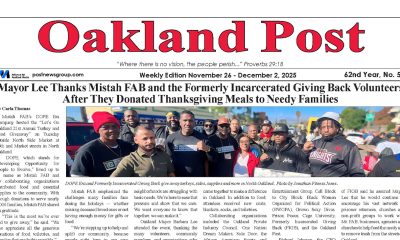
 Activism4 weeks ago
Activism4 weeks agoOakland Post: Week of November 26 – December 2, 2025
-

 #NNPA BlackPress3 weeks ago
#NNPA BlackPress3 weeks agoSeven Steps to Help Your Child Build Meaningful Connections
-

 #NNPA BlackPress3 weeks ago
#NNPA BlackPress3 weeks agoSeven Steps to Help Your Child Build Meaningful Connections
-
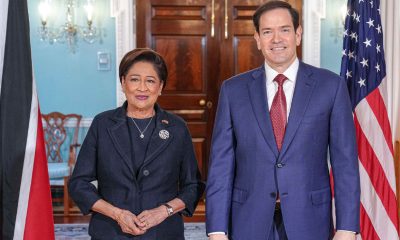
 #NNPA BlackPress3 weeks ago
#NNPA BlackPress3 weeks agoTrinidad and Tobago – Prime Minister Confirms U.S. Marines Working on Tobago Radar System
-

 #NNPA BlackPress3 weeks ago
#NNPA BlackPress3 weeks agoThanksgiving Celebrated Across the Tri-State
-
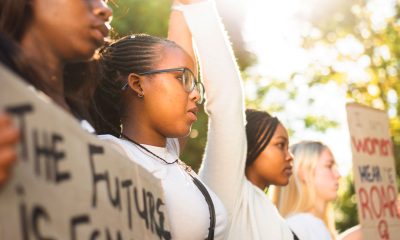
 #NNPA BlackPress3 weeks ago
#NNPA BlackPress3 weeks agoTeens Reject Today’s News as Trump Intensifies His Assault on the Press

